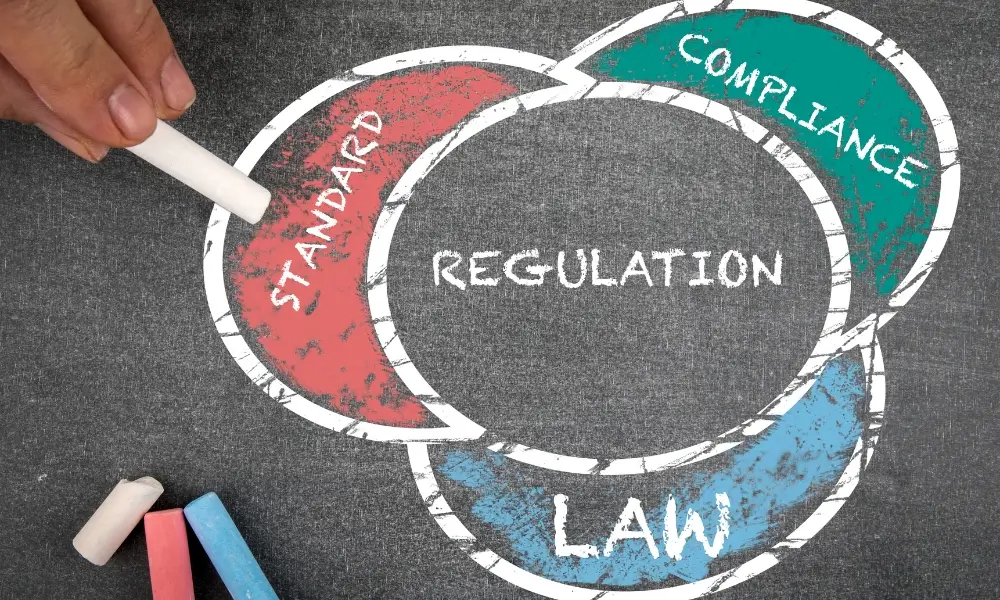Safety standards serve as our guiding light in a world filled with potential hazards. They illuminate the path toward preventing accidents, protecting workers, safeguarding the environment, and fostering responsible business practices.
Whether you’re an employer seeking to create a safe workplace, a consumer concerned about product safety, or a citizen who cares about our planet’s well-being, this article will shed light on the crucial role of safety standards and how they shape a better future for us all.
What are Safety Standards?
Safety standards are established guidelines, specifications, and procedures to minimize risks and protect individuals, the environment, and property. They outline best practices across various industries and activities to reduce hazards, prevent accidents, and promote overall well-being. Adherence to safety standards plays a crucial role in safeguarding lives and preventing incidents that could otherwise jeopardize the health and safety of people in the workplace or the general public.
Accidents and injuries have devastating consequences for individuals, businesses, and society. Workers may suffer physical harm, disability, or even death. Businesses incur costs related to medical expenses, lost productivity, equipment damage, and potential legal liabilities. On a larger scale, accidents strain healthcare systems, impede economic progress, and adversely impact the quality of everyone’s life.
A strong safety culture has ethical and economic advantages. Ethically, organizations have a moral obligation to protect their employees and the communities they operate in. Economically, by preventing incidents, companies reduce costs associated with workplace disruptions, insurance premiums, and potential lawsuits. A commitment to safety reflects corporate responsibility and leads to enhanced reputation, employee morale, and overall operational efficiency.

Types of Safety Standards
Safety standards can be broadly categorized based on their application areas, each targeting specific aspects of safety and risk management. Here’s a closer look at the main types of safety standards:
Industry-Specific Standards
These standards target specific work environments and their unique hazards. Let’s delve into some key examples:
- OSHA (Occupational Safety and Health Administration): OSHA establishes comprehensive standards across industries covering fall protection, electrical safety, machine guarding, hazard communication, and more. These standards protect workers in various sectors like construction, manufacturing, and healthcare.
- NFPA (National Fire Protection Agency): The NFPA develops crucial codes and standards related to fire prevention, electrical systems (e.g., National Electrical Code), and the safe use of flammable materials.
- ANSI (American National Standards Institute): ANSI facilitates the development of thousands of voluntary consensus standards focusing on areas like equipment safety, chemical handling, and personal protective equipment (PPE).
Product Safety Standards
These standards safeguard consumers from harm caused by defective or dangerous products. Key elements include:
- Regulatory Bodies: Agencies like the Consumer Product Safety Commission (CPSC) set mandatory safety requirements for consumer products and have the authority to recall unsafe items.
- International Standards (ISO): The International Organization for Standardization (ISO) develops globally recognized standards for product quality and safety, impacting trade and consumer confidence.
- Product Testing and Labeling: Rigorous testing protocols verify that products meet the required safety standards. Clear and informative labeling alerts consumers to potential hazards and guides proper use.
Process Safety Standards
Industries that handle hazardous materials heavily emphasize process safety to prevent catastrophic accidents.
- Process Safety Management (PSM): This comprehensive approach, often mandated by regulations, involves identifying hazards, assessing risks, implementing controls, and having plans for preventing and responding to significant incidents in chemical facilities or oil refineries.
Environmental Safety Standards
Designed to protect our planet, these standards govern various environmental aspects:
- EPA (Environmental Protection Agency): The EPA sets and enforces standards for air quality, water pollution, hazardous waste disposal, and controlling toxic substances. Compliance is crucial for industries to minimize environmental impact.
- Similar Agencies: Many countries have environmental agencies with corresponding standards tailored to local needs and regulations. These address the full spectrum of ecological protection.

Key Elements of Safety Standards
The fundamental components of safety standards encompass a comprehensive approach to preventing accidents and ensuring a safe environment for individuals and the community. These elements are the backbone for developing, implementing, and maintaining safety protocols across various sectors. Here’s a closer look at these key elements:
Risk Assessment
The cornerstone of safety standards is identifying, analyzing, and evaluating potential hazards. Risk assessments can be qualitative (descriptive) or quantitative (assigning numerical values to risk levels). This process helps prioritize safety efforts and allocate resources where they are most needed.
Hazard Control
After identifying risks, standards outline a hierarchy of measures to mitigate them:
- Elimination: Removing the hazard entirely is the most effective control (e.g., replacing a hazardous chemical with a safer alternative).
- Substitution: Substituting a less hazardous substance or process when possible.
- Engineering Controls: Isolating hazards with physical barriers, ventilation systems, or safer equipment design.
- Administrative Controls: Modifying work procedures, establishing policies, or rotating job tasks to reduce exposure to hazards.
- Personal Protective Equipment (PPE): The last line of defense, such as gloves, respirators, or safety glasses, when other controls are not feasible.
Workplace Safety Procedures
Safety standards provide detailed guidelines for how work should be performed safely. This includes:
- Safe Work Practices: Step-by-step instructions for tasks involving machinery, tools, and hazardous substances.
- Equipment Operation and Maintenance: Standards ensure equipment is used correctly and well-maintained to prevent malfunctions.
- Hazard Communication: Clear labeling, safety data sheets (SDS), and training are crucial for hazard awareness.
Emergency Preparedness
Standards address worst-case scenarios to protect lives and minimize damage. This entails:
- Emergency Response Plans: Clear procedures for evacuation, fire suppression, and coordination with external responders.
- Evacuation Procedures: Designated routes, assembly areas, and procedures for accounting for personnel.
- First-Aid Provisions: Availability of first-aid kits, trained personnel, and procedures for obtaining medical assistance.
Important Note: These key elements intertwine within safety standards to create a comprehensive framework. Adherence to these elements is essential for safeguarding workers, the public, and the planet.

Compliance and Enforcement
Ensuring adherence to safety standards involves a complex network of regulatory bodies, legal frameworks, and incentives for organizations to not only comply with the minimum requirements but to exceed them. Here’s an overview of the key aspects of compliance and enforcement in the context of safety standards:
Overview of Regulatory Bodies:
- OSHA (Occupational Safety and Health Administration): OSHA enforces workplace safety and health standards across various industries. They conduct inspections, issue citations, and levy fines for violations.
- EPA (Environmental Protection Agency): The EPA enforces environmental regulations to protect human health and the environment. They set standards, issue permits, conduct inspections, and initiate legal action against those in violation.
- Local Bodies: States, counties, and cities often have their own safety and environmental agencies. For example, state-level OSHA plans, fire departments, and building code enforcement agencies play essential roles.
Legal Implications
Non-compliance with safety standards can lead to serious consequences:
- Fines and Penalties: Regulatory bodies can impose significant financial penalties for non-compliance, often escalating with repeated or willful violations.
- Legal Liabilities: Businesses may face lawsuits from injured employees or members of the public affected by incidents related to safety violations.
- Criminal Liability: Company executives could even face criminal prosecution in extreme negligence or willful disregard for safety.
Benefits of Going Beyond Compliance
Proactive commitment to safety offers numerous advantages beyond avoiding penalties:
- Reputation: Companies with vital safety records gain positive recognition as responsible businesses, which attracts customers, partners, and top talent.
- Cost Reduction: Preventing accidents saves money on medical expenses, lost productivity, equipment repairs, and insurance premiums.
- Morale and Productivity: A safe workplace fosters a positive environment, improves employee morale, increases trust, and facilitates a more productive workforce.
Key Takeaway: It’s vital not to view safety compliance solely as a means of avoiding legal trouble. A genuine dedication to safety fosters an ethical, efficient, and ultimately more successful business model.
Conclusion
Ultimately, safety standards are the bedrock upon which we build a culture of protection for individuals, communities, and our environment. By understanding their importance, adhering to established guidelines, and proactively seeking to exceed minimum requirements, we create workplaces where people thrive, businesses prosper with a clear conscience, and the planet remains safe for generations to come. Investing in safety isn’t just an obligation, but a wise and responsible strategy for a better future.

